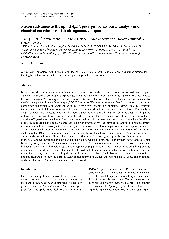摘要
In the melon, the Vat (monogenic, dominant) resistance gene governs both an antixenotic reaction to the melon aphid Aphis gossypii Clover (Homoptera, Aphididae) and a resistance to non-persistent virus transmission, restricted to this vector species. We investigated the behavioural features and tissue localisation of the antixenosis resistance by the electrical penetration graph technique (EPG, DC system). We also compared the chemical composition in amino compounds and proteins of the phloem sap collected from two isogenic lines of melon (Cucumis melo L.), carrying the Vat gene or not. All behavioural and chemical data indicated that this resistance is constitutive. EPG analysis clearly showed that access to phloem, although delayed by alterations in pathway activities, was not impaired in terms of frequency of access or initiation of feeding. The most striking feature was, however, a very reduced duration of ingestion from phloem of resistant plants, making this compartment one of the tissues where the effects of the Vat gene are unambiguously expressed. This was confirmed by clear differential activity of phloem extracts in artificial no-choice bioassays. Chemical analyses have shown that phloem saps from the two isogenic lines were extremely similar in profiles of ninhydrin positive compounds: and contained a low total amount of free amino acids (less than 10 mM). Out of more than 40 distinguishable peaks in the chromatograms (protein and non-protein amino acids, as well as small peptides), only five differentiated the two genotypes. Two of them were increased in the resistant genotype: glutamic acid and a major unknown peak, probably a non-protein amino acid (different from beta pyrazolyl-alanine, a Cucumis-specific amino acid). The three others were depressed in resistant plants, and included the sulphur amino acid cystine and a peptide peak partly composed of the cysteine-containing peptide glutathione (reduced form). Sap collection also showed that phloem exudation rates, as well as total protein and glutathione levels, were depressed in phloem sap from resistant plants. Such data are all indicative of a modified phloem-sealing physiology, linked to sulfhydryl oxidation processes, in plants carrying the Vat gene. The originality of the mechanism of Vat resistance to aphids is discussed.
- 出版日期1997-10
- 单位南京大学
